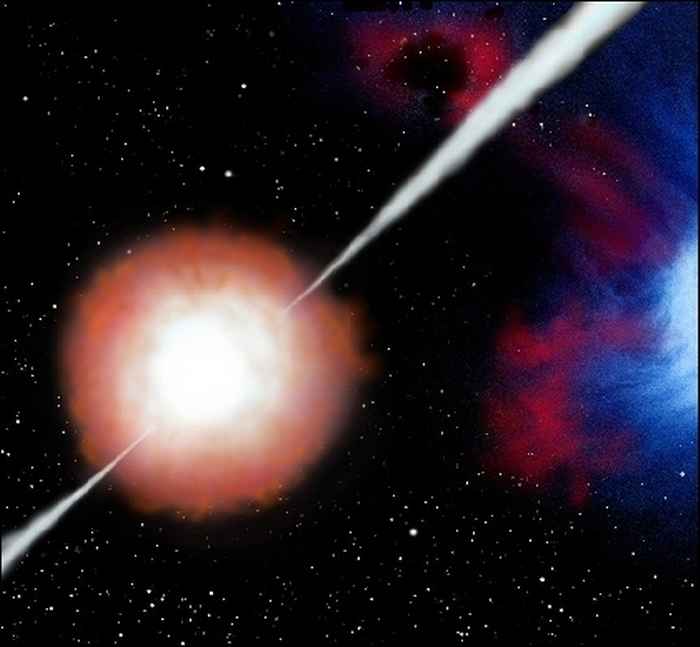Astronomers discover most distant object in the universe
11 November 2009

A group of astronomers, including UvA professor Ralph Wijers, recently published two papers in Nature on the most distant astronomical object to be discovered so far in the universe: gamma-ray burst GRB 090423.
GRB 090423 was detected by NASA's Swift satellite on 23 April 2009. Within a few minutes, several of the world's largest telescopes were able to locate the rapidly fading afterburner. The afterburner was exclusively visible in the infrared spectrum, indicating that the gamma-ray burst had emanated from an extremely distant point in space. Two teams measured an 8.2 redshift, indicating that the universe was at a mere 5% of its current age at the time of the gamma-ray burst. The record for most distant object was previously held by a galaxy with a redshift of 6.96.
Gamma-ray bursts
Gamma-ray bursts are the clearest and most violent explosions in the universe. On average, these brief bursts of gamma radiation occur once a day. They are caused by massive exploding stars and emit more light in half a minute than the Sun in its entire lifespan. The discovery of GRB 090423 is clear evidence that these heavy stars had already been formed by the time the universe was a mere 630 million years old.The cosmic Dark Ages
As far as astronomers are concerned, the discovery of the record-breaking gamma-ray burst opens a new window of research within cosmology: the cosmic Dark Ages. This period ended some 800 to 900 million years after the Big Bang. The period leading up to the Dark Ages had seen electrons and hydrogen and helium nuclei neutralise one another. The light emitted by the first generation of stars allowed the electrons to separate from their nuclei. As a result, the universe - which had previously been composed almost exclusively of neutral hydrogen - now came to consist almost entirely of ionised hydrogen. This transition process is known as the re-ionisation of the universe. Astronomers hope that observations of gamma rays from this early period will yield more information on the re-ionisation process that spawned the intergalactic medium we see today.Publication
Tanvir, N., et al, Nature 461, 1254-1257 (2009)
More information
For more information, please contact Prof. Dr Ralph Wijers, email: R.A.M.J.Wijers@uva.nl.